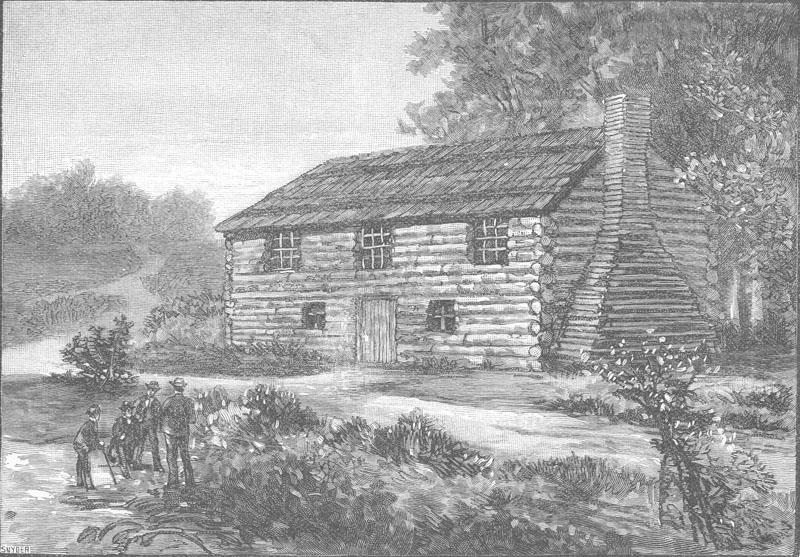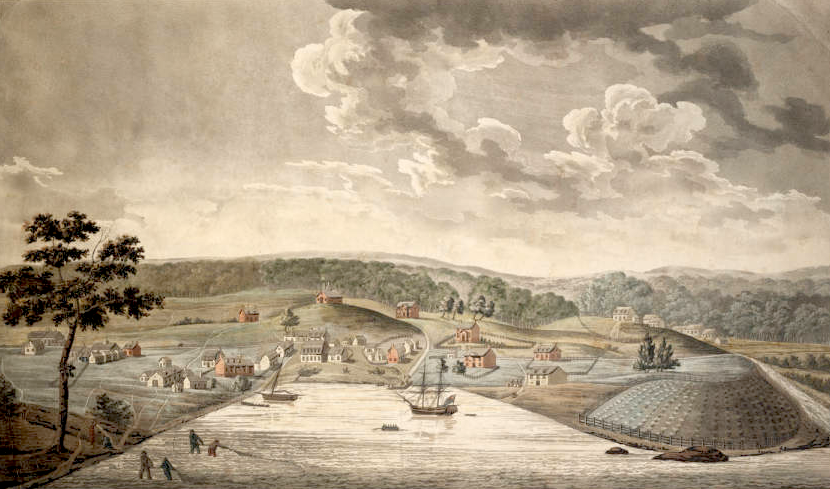|
Walters Bath No. 2
Walters Bath No. 2 is a historic bath house located in southwest Baltimore, Maryland, United States. It is a small brick building of laid in Flemish bond with black headers and Maryland limestone trimming. It was constructed in a very simplified form of Renaissance Revival architecture popularized at the turn of the 20th century. The bath house in the 900 block, Washington Boulevard (U.S. Route 1) in the southwest area of Pigtown / Washington Village, was built for the City of Baltimore by Henry Walters (1848–1931), who contributed four bath houses to the city. It was co-designed by architect George Archer (1848-1920), and constructed in 1901. Architect Archer was trained at Princeton University and lived in a landmark townhouse of white marble at the southeast corner of North Charles and West Madison Streets, facing Washington Place and the famous Washington Monument. The public bath system was abolished 60 years later, at the end of 1959 with the general extension of ind ... [...More Info...] [...Related Items...] OR: [Wikipedia] [Google] [Baidu] |
Pigtown, Baltimore
Pigtown is a neighborhood in the southwest area of Baltimore, bordered by Martin Luther King Jr. Boulevard to the east, Monroe Street to the west, Russell Street to the south, and West Pratt Street to the north. The neighborhood acquired its name during the second half of the 19th century, when the area was the site of butcher shops and meat packing plants to process pigs transported from the Midwest on the B&O Railroad; they were herded across Ostend and Cross Streets to be slaughtered and processed. Pigtown's annual festival famously features a pig race, "The Squeakness", to commemorate its history. Pigtown has long been considered one of Baltimore's most promising neighborhoods due to its proximity to the I-95 corridor, the University of Maryland Medical Center, Camden Yards, Ravens Stadium, the Inner Harbor, and Downtown Baltimore. New developments on the eastern edge of the neighborhood of luxury townhomes were stalled after the 2008 market crash but eventually resumed ... [...More Info...] [...Related Items...] OR: [Wikipedia] [Google] [Baidu] |
Henry Walters
Henry Walters (September 26, 1848 – November 30, 1931) was noted as an art collector and philanthropist, a founder of the Walters Art Gallery (now the Walters Art Museum) in Baltimore, Maryland, which he donated to the city in his 1931 will for the benefit of the public. From the late 19th century, Walters lived most of the time in New York City, where from 1903 on, he served on the executive committee of the Metropolitan Museum of Art. He was selected as second vice president in 1913, a position he held until his death. Like his father William Thompson Walters, (1820–1894), he was a businessman in the railroad industry, serving as president of the Atlantic Coast Line Railroad (1894–1902), which had been established by his father. Early life and education Walters was born in 1848 to William Thompson Walters, (1820–1894), a businessman who later founded the Atlantic Coast Line Railroad. Henry graduated from Georgetown University in Washington, D.C., in 1869. He did gr ... [...More Info...] [...Related Items...] OR: [Wikipedia] [Google] [Baidu] |
Government Buildings Completed In 1901
A government is the system or group of people governing an organized community, generally a state. In the case of its broad associative definition, government normally consists of legislature, executive, and judiciary. Government is a means by which organizational policies are enforced, as well as a mechanism for determining policy. In many countries, the government has a kind of constitution, a statement of its governing principles and philosophy. While all types of organizations have governance, the term ''government'' is often used more specifically to refer to the approximately 200 independent national governments and subsidiary organizations. The main types of modern political systems recognized are democracies, totalitarian regimes, and, sitting between these two, authoritarian regimes with a variety of hybrid regimes. Modern classification systems also include monarchies as a standalone entity or as a hybrid system of the main three. Historically prevalent forms ... [...More Info...] [...Related Items...] OR: [Wikipedia] [Google] [Baidu] |
National Register Of Historic Places
The National Register of Historic Places (NRHP) is the Federal government of the United States, United States federal government's official United States National Register of Historic Places listings, list of sites, buildings, structures, Historic districts in the United States, districts, and objects deemed worthy of Historic preservation, preservation for their historical significance or "great artistic value". The enactment of the National Historic Preservation Act (NHPA) in 1966 established the National Register and the process for adding properties to it. Of the more than one and a half million properties on the National Register, 95,000 are listed individually. The remainder are contributing property, contributing resources within historic district (United States), historic districts. For the most of its history, the National Register has been administered by the National Park Service (NPS), an agency within the United States Department of the Interior. Its goals are to ... [...More Info...] [...Related Items...] OR: [Wikipedia] [Google] [Baidu] |
Washington Monument (Baltimore)
The Washington Monument is the centerpiece of intersecting Mount Vernon Place and Washington Place, an urban square in the Mount Vernon-Belvedere neighborhood north of downtown Baltimore, Maryland. It was the first major monument to honor George Washington (1732–1799). History The Monument, a colossal landmark column, was designed by American architect Robert Mills (1781–1855), who also designed the later Washington Monument on the National Mall in Washington, D.C. Construction began in 1815 on land donated by Colonel John Eager Howard (1752–1827), from his extensive "Belvidere" estate just north of Baltimore Town, and the masonry work was completed by 1829. The 178 foot, 8 inch doric column holds a ground-floor gallery offering digital exhibits about the construction of the Monument, the history of Mount Vernon and Washington Places neighborhood and of the life and accomplishments of General and President George Washington. Climbing the 227 steps to the top provides ... [...More Info...] [...Related Items...] OR: [Wikipedia] [Google] [Baidu] |
Charles Street (Baltimore)
Charles Street, known for most of its route as Maryland Route 139 (MD 139), runs through Baltimore and the Towson area of Baltimore County. On the north end, it terminates at an intersection with Bellona Avenue near Interstate 695 (I-695). At the south end, it terminates in Federal Hill in Baltimore. Charles Street is one of the major routes through Baltimore, and is a major public transportation corridor. For the one-way portions of Charles Street, the street is functionally complemented by the parallel St. Paul Street, including St. Paul Place and Preston Gardens, Maryland Avenue, Cathedral Street, and Liberty Street. Though not exactly at the west–east midpoint of the city, Charles Street is the dividing line between the west and east sides of Baltimore. On any street that crosses Charles Street, address numbers start from the unit block on either side, and the streets are identified as either "West" or "East," depending on whether they are to the west or eas ... [...More Info...] [...Related Items...] OR: [Wikipedia] [Google] [Baidu] |
Princeton University
Princeton University is a private university, private Ivy League research university in Princeton, New Jersey, United States. Founded in 1746 in Elizabeth, New Jersey, Elizabeth as the College of New Jersey, Princeton is the List of Colonial Colleges, fourth-oldest institution of higher education in the United States and one of the nine colonial colleges chartered before the American Revolution. The institution moved to Newark, New Jersey, Newark in 1747 and then to its Mercer County, New Jersey, Mercer County campus in Princeton nine years later. It officially became a university in 1896 and was subsequently renamed Princeton University. The university is governed by the Trustees of Princeton University and has an endowment of $37.7 billion, the largest List of colleges and universities in the United States by endowment, endowment per student in the United States. Princeton provides undergraduate education, undergraduate and graduate education, graduate instruction in the hu ... [...More Info...] [...Related Items...] OR: [Wikipedia] [Google] [Baidu] |
Renaissance Revival
Renaissance Revival architecture (sometimes referred to as "Neo-Renaissance") is a group of 19th-century architectural revival styles which were neither Greek Revival nor Gothic Revival but which instead drew inspiration from a wide range of classicizing Italian modes. Under the broad designation Renaissance architecture 19th-century architects and critics went beyond the architectural style which began in Florence and Central Italy in the early 15th century as an expression of Renaissance humanism; they also included styles that can be identified as Mannerist or Baroque. Self-applied style designations were rife in the mid- and later 19th century: "Neo-Renaissance" might be applied by contemporaries to structures that others called "Italianate", or when many French Baroque features are present ( Second Empire). The divergent forms of Renaissance architecture in different parts of Europe, particularly in France and Italy, has added to the difficulty of defining and recognizi ... [...More Info...] [...Related Items...] OR: [Wikipedia] [Google] [Baidu] |
Baltimore, Maryland
Baltimore is the List of municipalities in Maryland, most populous city in the U.S. state of Maryland. With a population of 585,708 at the 2020 United States census, 2020 census and estimated at 568,271 in 2024, it is the List of United States cities by population, 30th-most populous U.S. city. The Baltimore metropolitan area is the Metropolitan statistical areas, 20th-largest metropolitan area in the country at 2.84 million residents. The city is also part of the Washington–Baltimore combined statistical area, which had a population of 9.97 million in 2020. Baltimore was designated as an Independent city (United States), independent city by the Constitution of Maryland in 1851. Though not located under the jurisdiction of any county in the state, it forms part of the central Maryland region together with Baltimore County, Maryland, the surrounding county that shares its name. The land that is present-day Baltimore was used as hunting ground by Paleo-Indians. In the early 160 ... [...More Info...] [...Related Items...] OR: [Wikipedia] [Google] [Baidu] |
Limestone
Limestone is a type of carbonate rock, carbonate sedimentary rock which is the main source of the material Lime (material), lime. It is composed mostly of the minerals calcite and aragonite, which are different Polymorphism (materials science), crystal forms of calcium carbonate . Limestone forms when these minerals Precipitation (chemistry), precipitate out of water containing dissolved calcium. This can take place through both biological and nonbiological processes, though biological processes, such as the accumulation of corals and shells in the sea, have likely been more important for the last 540 million years. Limestone often contains fossils which provide scientists with information on ancient environments and on the evolution of life. About 20% to 25% of sedimentary rock is carbonate rock, and most of this is limestone. The remaining carbonate rock is mostly Dolomite (rock), dolomite, a closely related rock, which contains a high percentage of the mineral Dolomite (mine ... [...More Info...] [...Related Items...] OR: [Wikipedia] [Google] [Baidu] |
Flemish Bond
Flemish bond is a pattern of brickwork that is a common feature in Georgian architecture. The pattern features bricks laid lengthwise (''stretchers'') alternating with bricks laid with their shorter ends exposed (''headers'') within the same courses. This decorative pattern can be accented by glazing or burning the exposed ends of the headers so that they possess a dark, glassy surface that contrasts with the stretchers. Despite the bond's name, the pattern did not originate in Flanders and can be found in European architecture dating to the late Middle Ages. The pattern became popular among prestigious architectural projects in 17th-century England before spreading to British colonies in North America where it became closely associated with colonial Georgian architecture, especially in Virginia and Pennsylvania. With the early 20th-century restoration project at Colonial Williamsburg, the pattern experienced renewed popularity in the United States. Name Despite being called " ... [...More Info...] [...Related Items...] OR: [Wikipedia] [Google] [Baidu] |








